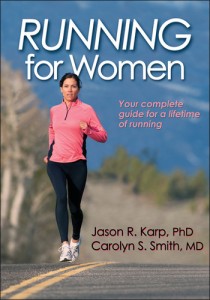I often tell people that I run because there’s not really anything to it, at least from a skills point of view. My hand-eye coordination is terrible, and my aim is so bad that I wouldn’t be able to hit a barn with a tennis ball from two feet away. With running, I don’t have to do any of that. All I have to do is put one foot in front of the other and make sure I don’t trip over any pumpkins (almost happened once).
Running is just running, right?
Well, no. Runners can be sliced and diced in many different ways. Fast runners and slow runners. Heel strikers and mid-sole strikers. Sprinters and distance runners. Road runners and trail runners. Old runners and young runners.
There are all kinds of books out there that tell you how you are “supposed” to run. They give advice about nutrition, training programs, how to run up hills, how to prepare for races, and much more. While the information contained within these books can have a lot of value, it is highly generalized.
There is one book, however, that addresses the differences between two very distinct groups of runners – men and women.
We all know that men are generally faster and stronger than women, but most of us don’t give much thought to the reasons for that. Is it just that men have larger physiques and higher muscle mass? Or is something else going on?
In Running for Women, Jason Karp and Carolyn Smith delve into the science behind it all. This interesting book talks about the reasons for men’s generally superior performance, and how women can turn their biological differences into advantages. We also learn that in certain classes of athletic events, women may actually be naturally better than men.
Are you a pregnant or new mother? Are you an older, post-menopausal woman? Or perhaps a younger woman wondering how to effectively run at “that” time of the month? Have you been wondering about whether your diet is giving you what you need? Running for Women will give you some valuable pointers to keep you on the road, healthy and happy.
The authors are certainly well qualified to talk about these topics. Jason Karp is a running expert and sports physiologist who has coached some of the best athletes in high schools, colleges and clubs. Carolyn Smith is a sports medicine physician and accomplished distance runner who has excelled in a variety of ultramarathon distances.
A word for the faint-hearted: this book is not light reading. It goes into a lot of scientific detail that requires some concentration to digest. But reading the technical stuff does lead to a much broader understanding of how a woman’s body works and how to maximize the benefits of having been born with two X-chromosomes. And if you’re like me and have a fascination with all things scientific, you will find this book hard to put down.
(Review copy of “Running for Women” and cover image provided by Human Kinetics.)











